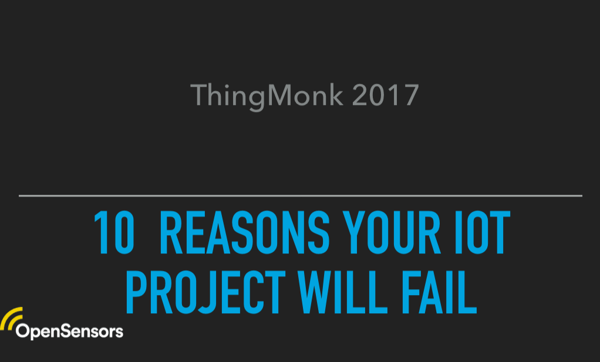IoT will transform how teams operate by making their environments more responsive by using their physical infrastructure more efficiently. Here's 10 reasons why IoT projects could fail.
Sensors are a means to greater self awareness
Successful IoT deployments are going to be transformational on team productivity.
Sensor networks are a means to greater self-awareness and give responsiveness to workspaces, buildings and cities, complex and intelligently reactive nervous systems.
At OpenSensors we spend a lot of time thinking and preparing for sensor deployments successfully so that the data they provide enables our customers to manage and utilise the physical infrastructure supporting their employees more efficiently and effectively.
Our goal is to create more productive and healthier workplaces. Our business model is not predicated on selling large volumes of sensors but on helping our customers manage IoT networks and the data they provide.
IoT is not SAAS
To design, deploy, provision and operate an IoT network takes more than a couple of talented data scientists.
The software industry has spent the last two decades making it very easy to deploy software as a service application - software gliding on abstract virtual environments that have become friction free.
IoT is not SaaS - you cannot ignore the physical nature of IoT and with that physicality comes the need to manage inventory, logistics and supply chains. Because many networks contain new components or new software and we will combine a thorough site preparation inspection with an off site staging of the network to simplify trouble shooting and ensure on time delivery of a fully functional IoT network.
It takes a multi-disciplinary team of complementary experts who collaborate and hold each other accountable. You need hardware people, software people, networking specialists, QA people, project managers and people skilled in managing supply chains and logistics.
OpenSensors has assembled a multi-disciplinary team because we are promising the delivery of an operational network composed of complex and rapidly evolving hardware and software components.
Want to find out more about desk and meeting room sensors?

